1. Europe’s Gas Price Cap Might Backfire Soon
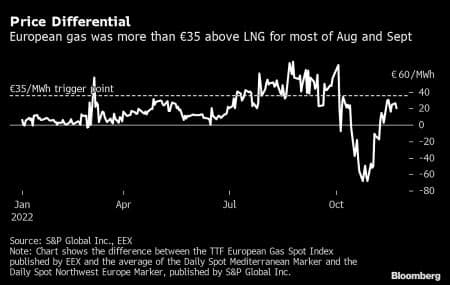
– Members of the European Union have agreed to a gas price cap of €180 per MWh (approximately $56 per mmBtu) that could be triggered starting from February 15, 2023.
– If the TTF front-month contract exceeds the suggested limit for three consecutive days and simultaneously if the exchange-traded spot price is €35/MWh above the reference European LNG price, the cap kicks in immediately.
– Once the price cap is triggered, trades would not be permitted on the front-month, three-month, and front-year TTF contracts at a price more than €35/MWh above the LNG price.
– The risk for the EU is that gas trade might move away from the exchange onto over-the-counter deals and might trigger a massive gas shortage if Asian LNG prices soar above European ones.
2. Russia Strengthens Energy Pact with China
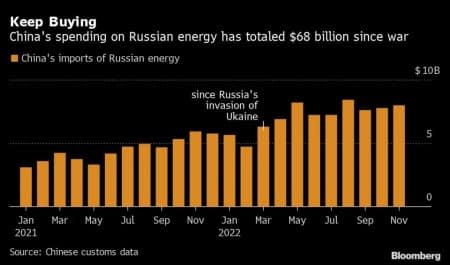
– China’s purchases of Russian energy climbed once again in November, hitting $8 billion and bringing the year-to-date total to almost $80 billion, approximately 70% higher than last year’s results.
– The most recent trend came from LNG where Chinese buyers doubled their purchases of Russian liquefied gas to 852,000 tons in November, doubling the volumes year-on-year.
– Likewise in oil, Russian deliveries to China continue to rise as the former delivered 7.81 million tons in November, up 17% year-on-year and overtaking Saudi Arabia as its top crude supplier.
– Interestingly, both China’s oil and LNG imports have shrunk significantly this year, so Russia is getting a higher market share amidst lower Chinese buying.
3. Japan’s Nuclear Renaissance Sparks Hope for Calmer 2023
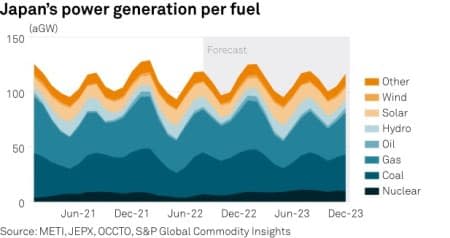
– The return of two nuclear reactors from lengthy maintenance will help Japan meet peak winter electricity demand, easing the pressure on the country’s fossil generation.
– Nuclear energy used to provide some 30% of Japan’s electricity needs before Fukushima, however its erstwhile capacity of 47 GW fell to as little as 5 GW recently.
– Thanks to the returning reactors, and a further two units at the Takahama power plant expected to be brought back in Q1 2023, nuclear capacity will rise to 9.8 GW by mid-2023.
– Meanwhile, Japan’s energy watchdog agreed to amend regulations that would allow nuclear reactors to operate longer than the previous limit of 60 years, more good news for the country’s nuclear sector.
4. Pipeline Bottlenecks Now Haunt US Gas Sector
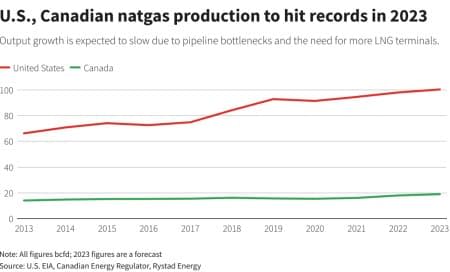
– US and Canadian natural gas production is set to reach all-time highs next year, however further growth will be hamstrung by a lack of new LNG terminals and pipeline bottlenecks.
– US gas output is expected to reach 100.4 bcfd in 2023, up 2% compared to this year’s average, driven by gas-rich basins like Haynesville and the oil-prolific Permian where gas is a by-product of crude production.
– With the Appalachia Basin constrained by pipeline offtake for years, the Permian is starting to hit infrastructure limits, too, with gas prices in Waha already trading in the negative this year.
– With no new LNG terminals set to be commissioned next year, the growth in exports will be driven by Freeport LNG returning after a June blaze halted all operations, with the daily liquefaction rate at 12.3 bcfd.
5. UK’s Electricity Problem Gets Out of Hand
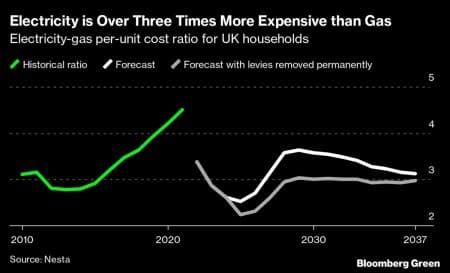
– Whilst Europe is cutting gas demand wherever possible, the UK is confronted with a fierce dilemma as electricity prices being triple the level of gas prices make any switch to heat pumps uneconomical.
– The reason for this is that over the 2010s the country’s investments and subsidies into renewable energy have been added onto electricity bills rather than gas bills, artificially inflating them in the process.
– With 85% of UK residents still relying on gas boilers which are less efficient but overall cheaper, London’s objective of installing 600,000 heat pumps each year by 2028 is looking increasingly shaky.
– In the meantime, UK borrowing surged to 13.5 billion last month on the back of the British government’s partial subsidy of household energy bills, tripling year-on-year.
6. ESG Loses Wider Appeal Amidst 2022 Turmoil
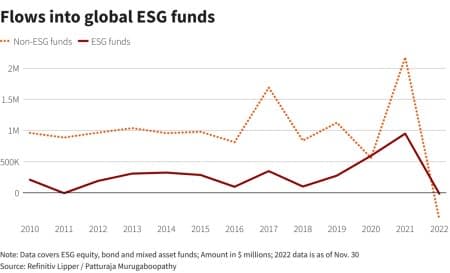
– For the first time in more than a decade, 2022 will see the first annual ESG fund outflows as volatile financial markets and overperforming energy markets took the shine out of environmental, social, and governance issues.
– Following years of net inflows, investors have withdrawn a net 13.2 billion this year so far according to Reuters, with total net assets managed in ESG funds down 29% ytd.
– Whilst non-ESG funds have also witnessed massive withdrawals to the extent of 420 billion in Jan-Nov 2022, this represents only a 21% drop in net assets, outperforming ESG funds for the first time in five years.
– Global equity issuance in the ESG has more than halved in 2022 to date, coming in at 21.9 billion, i.e. even lower than readings from the pandemic-ridden 2020.
7. Germany is Struggling to Kick its Coal Addiction
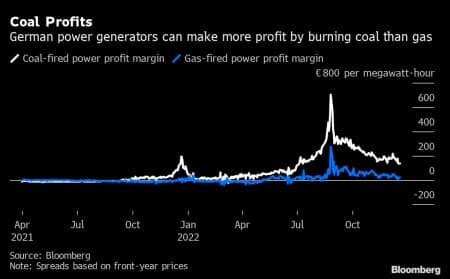
– Germany’s government has been pushing for an ambitious 2030 phase-out of coal consumption, 8 years earlier than previously promised, but it is ramping up coal usage in the meantime.
– One of the few nations to increase coal imports this year, electricity generated by coal accounted for more than one-third of Germany’s needs, up 13% year-on-year.
– Only this week, embattled utility firm Uniper extended the commercial operations of two of its coal-fired plants until March 2024, with more extensions expected across the nation.
– Throughout 2022, gas-powered generation was borderline profitable amidst ballooning natural gas prices, whilst coal generation has been generating an average of roughly €200/MWh this year.
Source: https://finance.yahoo.com/news/europes-natural-gas-price-cap-200000964.html
